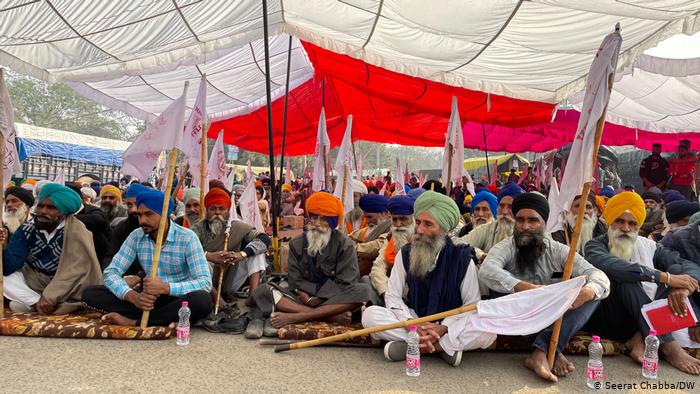DEHLI (WEB DESK )
Farmers in India have reached a stalemate with the government over its proposed amendments to laws the farmers feel will ravage their livelihoods and create an opportunity for large, private companies to enter and exploit the entire agriculture sector.
The laws directly impact the farmers in India, but they could also have a significant impact to consumers globally, who rely on India for many key items such as turmeric, chili and ginger.
To fight against three laws passed in September, farmers from all across the country have been protesting for days just outside New Delhi — despite the capital being a hotspot for Covid-19 in a country that has already reported more than 9.4 million cases.
More than half of India’s working population comes from the agricultural sector, according to India’s most recent Census in 2011. From 2018-2019, the average Indian farmer earned 10,329 rupees (about $140) per month, according to data from a Hindustan Times analysis. Of these 263.1 million workers, many solely rely on farming to put food on their own table and roof over their head.
Farmers from Punjab, Haryana and Uttar Pradesh arrived by tractors and on foot in New Delhi last month where they blocked roads and set up makeshift camps, according to protest leaders. Some slept on the road or in their tractors, and several places of worship offered protesters food.

The protests haven’t been exclusive to India.
People around the world have been protesting to show support and stand with the farmers because the protests are about “the people who feed all of us” and their fair treatment, said Simran Jeet Singh, a scholar of religion and history currently teaching at Union Seminary and a Stephen M. Keller Term Member for the Council on Foreign Relations.
“The pandemic has shown us that there are two economies,” he said. “Essential workers across the world are suffering. The farmers in India represent all of them, and their resistance to unjust legislation that privileges the uber-wealthy corporations is a resistance that speaks to so many of us all over the world.”

India is the world’s largest producer, consumer and exporter of spices — producing about 68% of the world’s spices, according to Spices Board India, Ministry of Commerce & Industry, Govt. of India.
In 2019, the top 10 importers of Indian spices were the US, China, Vietnam, Hong Kong, Bangladesh, Thailand, UK, UAE, Malaysia, and Sri Lanka, data shows.
Items like pepper, cardamom, chilli, ginger, turmeric, coriander, cumin, garlic, curry powder and fennel are among the exports.
India is the leading exporter of Basmati rice and world’s largest milk producer to the global market, according to India’s Agricultural & Processed Food Products Export Development Authority, with the main production happening in states like Punjab, Haryana, and Delhi — where the farmers are also protesting.
The country is also the world’s second-largest producer of rice, wheat and other cereals, ranking second in fruits and vegetable production in the world just under China.
Herbs and medicine go hand-in-hand for those practicing homeopathy or Ayurveda, an ancient Hindu system of medicine based on the idea of balance within your body, built on the foundation of herbal treatment, yoga and breathing.
At times, ginger is served for arthritis and digestion, cinnamon to boost circulation and lower blood sugar, and fenugreek to fight infection — all top exports of the country.
India is home to thousands of plants but 7,500 of them are known and used for medicinal uses, according to data from the Journal of Ethnobiology and Ethnomedicine. The same data says approximately 25% of drugs are derived from plants.
Courtesy….CNN

